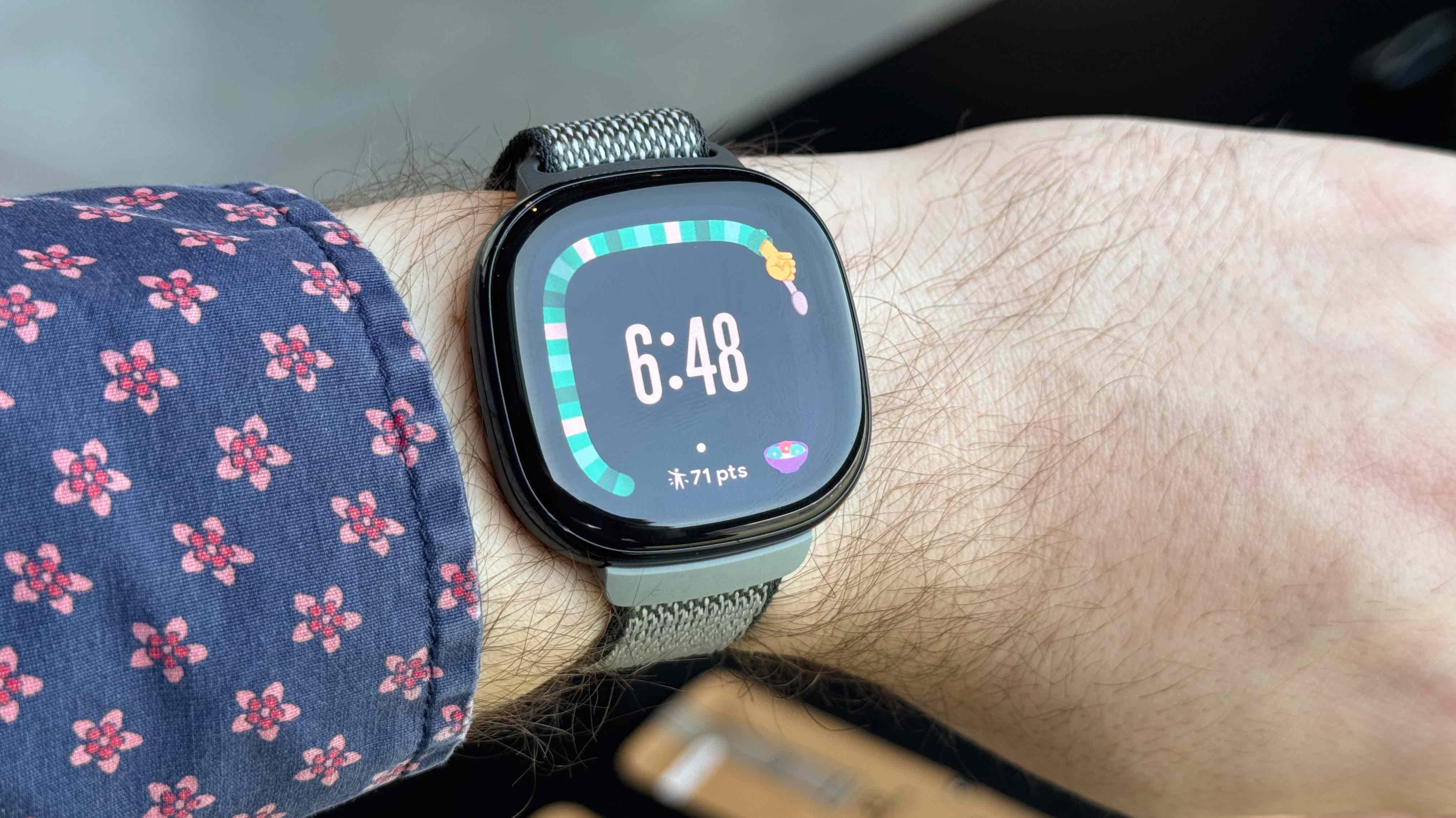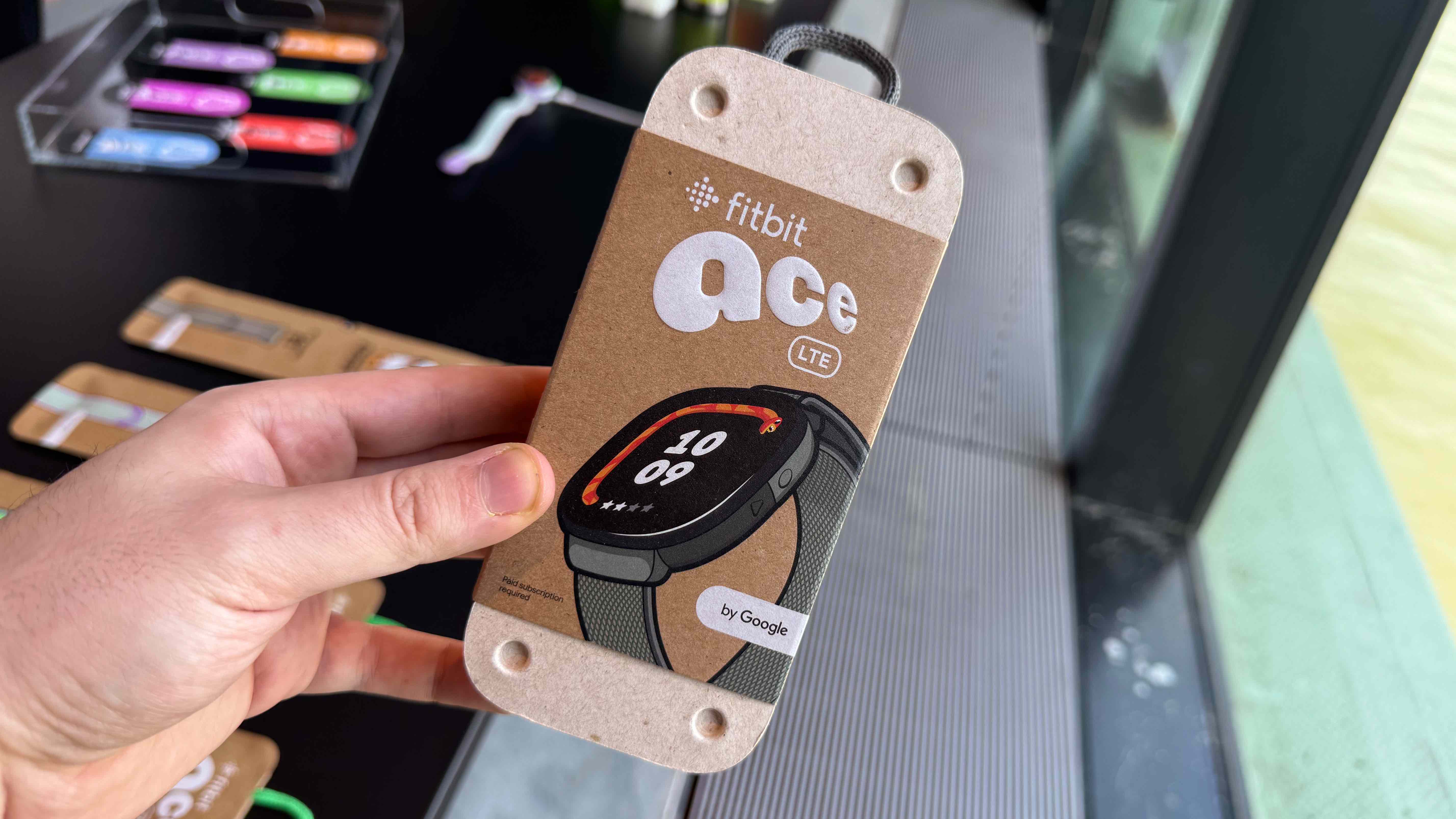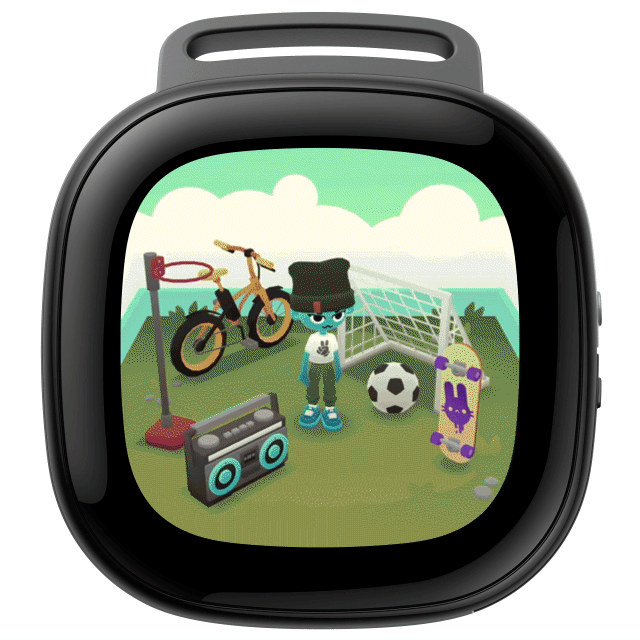Google and Fitbit's reentry into kids smartwatches merges activity and gaming – but comes at a high price
It's all about interval-based-gaming

It’s been about three years since the Fitbit Ace 3 hit the market, and as an activity tracker designed for kids, it didn’t stray too far from the working formula – both in terms of price at $79.95, and in terms of feature set.
Google and Fitbit clearly see the potential in the children's fitness tracker and smartwatch category, though. And after a few years without a release and countless other options, including Apple’s School Time mode for the Apple Watch, we’re getting the Fitbit Ace LTE.
It’s a new $229 smartwatch built from the ground up for kids with built-in games that encourage movement and getting activity, a rewards system, parent-approved messaging, and the feel of the full-fledged smartwatch. It's only available in the US at launch, but Google has confirmed that the Fitbit Ace LTE will launch in additional countries next year.
The price, though, is a big one. As the name suggests, the Fitbit Ace LTE needs a network connection. This comes in the form of the Fitbit Ace Pass, a $9.99 monthly subscription that’s required.
Looks like a regular smartwatch, but with a kid-centric interface

Like the Fitbit Ace 3, which resembled other Fitbits, the Fitbit Ace LTE resembles a Versa 3. It is a rounded square build with a vibrant, sharp touch screen in the middle and two buttons on the left side. With a layer of Corning Gorilla Glass over the screen, it should be rugged enough to handle accidental bumps and potential falls when worn by a child. Considering the $229 price, you’ll be happy to know it’s made of stainless steel and plastic.
Google is even shipping it with a bumper in the box so you can get a raised lip around the screen out of the box. You can also pick from two styles: Mild Pebble or Spicy Pebble. There will also be collectible bands which, when used and attached to the Ace LTE, will unlock content on the smartwatch.
Like Animal Crossing on the Switch or any game featuring an avatar, the Fitbit Ace LTE aims to gamify the activity-tracking experience. The main watch face offers the time in the middle and your total number of points – essentially your aggregated health data – at the bottom, but around it is what Fitbit has dubbed a “noodle.” It’s a fun animation that will move around and eventually be complete when you hit your goal. I saw a “rock-on” noodle and a spooky one in a demo. The whole idea for children is to celebrate and track their goals.
Get daily insight, inspiration and deals in your inbox
Sign up for breaking news, reviews, opinion, top tech deals, and more.
It’s quite similar to closing your rings on an Apple Watch, albeit a bit more animated. The goal here is also to get 60 minutes of activity daily. Noodle encourages this, but Google has also built mini-games into the device.
These aren’t meant to distract you from being active but instead designed to be used as “interval-based gaming.” In one game, I would raise my wrist around and see a lake, tap the screen, and then throw my arm out to cast the line – I’d wait for a haptic buzz and then see what fish I caught. It’s kind of an activity, but the Fitbit Ace LTE will then give a task, something along the lines of you needing to walk 200 steps to recharge, and then you can come back. The reward is hitting your points and unlocking something in the game.

And that’s where the “eejie” comes in, and it’s essentially the avatar that is fully customizable and lives within the Fitbit Ace LTE. So yes, Google and Fitbit integrated gaming here. For parents, between interchanging collectible bands and an avatar that feels a little like a Tamagotchi, it might be a nostalgia-fueled ride. The idea is to unlock clothing and other elements from pairing a new band with the Fitbit Ace LTE and as rewards for other activities. If your child has a friend with a Fitbit Ace LTE, their two “eejies” can also hang out and visit each other’s virtual homes.
Truly, that is where Google and Fitbit aim to rethink the kids' smartwatch space – they are striving to create a compelling experience on the wrist that does not discourage activity but rather encourages it. The hope clearly is to get a lot of these on kids' wrists and build a sense of community, maybe even through sharing the collectible bands.
The technology powering the device is pretty sound as well. The Fitbit Ace LTE has the same processor as the Pixel Watch, and it felt pretty snappy in my demo. I was able to quickly jump between viewing health statistics, opening up the “eejie’s” home, and then navigating to a game. Like any other smartwatch, it has an array of sensors, including an accelerometer, gyroscope, altimeter, and even an optical heart rate sensor. Google also promises "all-day" battery life of up to 16 hours (less than an Apple Watch Series 9), and it’s powered by a 328mAh battery cell inside. It also charges with the same charger as the Pixel Watch 2.
The Ace LTE is separate from the rest of the Fitbit ecosystem, including the Pixel Watch. The Fitbit Ace LTE lives in the Fitbit Ace app on Android or iOS, aka the parent’s phone running either operating system. It’ll be set up there and monitored, but that is also where it syncs when connected. A parent or guardian will be able to set up to 20 contacts to allow the child to message or call from the Fitbit Ace LTE, and the parent will be able to see the location of the smartwatch.
From a privacy perspective, only a parent or guardian can access the location of the Fitbit Ace LTE within the companion app on Android and iOS, with location history being deleted after 24 hours. There are no advertisements or third-party apps on the smartwatch itself, and data activity is only stored for a maximum of 35 days.
Fitbit Ace Pass is required and is $9.99 a month for the LTE connectivity as well as more content. It gives the Ace LTE access to the “eejie,” all of the games in the Fitbit Arcade, future content drops, and the communication aspects of the smartwatch. It’s either $9.99 a month or $120 for the year, and while a free trial doesn’t come with the purchase, you can get 50% off the annual plan and a band for free. You’ll just need to opt in and sign up by August 31, 2024.
The outlook
Google and Fitbit are certainly trying a different approach with their children's smartwatches. It’s built from scratch and purposely designed for kids, complete with a more durable design and an interface, ethos built around encouraging activity. The games were fun in a demo, and I think if the rewards and quests are variable enough, it could stand out as an entertaining experience for kids.
The question arises, though, on price – $229 USD is far more than competing kids' smartwatches, closer to the cost of a Pixel Watch and just $20 shy of an Apple Watch SE 2nd Gen. The Fitbit Ace LTE also requires a subscription plan for connectivity and content access, and while that’s on par with a mobile plan for a connected watch, this is a much higher price of entry than past Fitbits (or even most past smartwatches) designed for kids.
We’ll need to go hands-on and further test the Fitbit Ace LTE to see if it stands up to the price tag and whether the collectible, gamified Tamagotchi or Pokemon Go-esque elements can add any value here.
In the meantime, Google is already taking orders for the Fitbit Ace LTE, which will be available for $229 in Spicy Pebble or Mild Pebble from the Google Store and Amazon. It will begin shipping on June 5, 2024, and will be available only in the United States at launch – but come 2025, Google has confirmed it will launch in additional countries.
You might also like...

Jacob Krol is the US Managing Editor, News for TechRadar. He’s been writing about technology since he was 14 when he started his own tech blog. Since then Jacob has worked for a plethora of publications including CNN Underscored, TheStreet, Parade, Men’s Journal, Mashable, CNET, and CNBC among others.
He specializes in covering companies like Apple, Samsung, and Google and going hands-on with mobile devices, smart home gadgets, TVs, and wearables. In his spare time, you can find Jacob listening to Bruce Springsteen, building a Lego set, or binge-watching the latest from Disney, Marvel, or Star Wars.